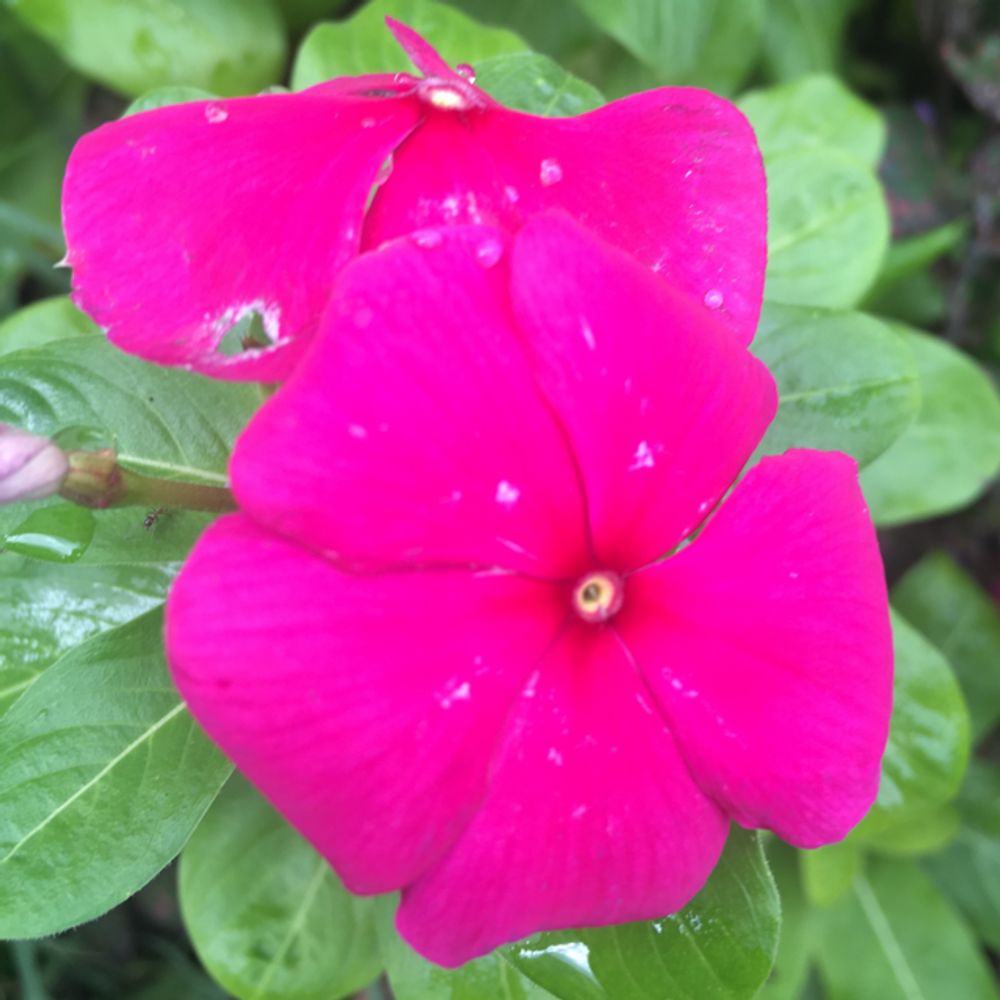Periwinkle
(Vinca)

Description
Vinca is a genus of flowering plants in the family Apocynaceae, commonly known as periwinkles. The genus Vinca comprises seven species of evergreen shrubs and subshrubs native to Europe, Asia, and North Africa. Vinca plants are popular among gardeners for their attractive foliage, showy flowers, and ability to thrive in a wide range of growing conditions. Taxonomy and Nomenclature The genus Vinca was first described by Carl Linnaeus in 1753. The name Vinca is derived from the Latin word "vincire," which means "to bind," referring to the long, flexible stems that can be used for binding. The genus Vinca is sometimes confused with the genus Catharanthus, which also belongs to the family Apocynaceae and is commonly known as periwinkle or Madagascar periwinkle. However, Vinca plants have larger flowers, broader leaves, and woody stems, while Catharanthus plants have smaller flowers, narrow leaves, and herbaceous stems. Description and Morphology Vinca plants are evergreen shrubs or subshrubs that grow up to 1 meter tall. They have long, trailing stems that can spread up to 2 meters in length. The leaves are opposite, glossy, and leathery, with a dark green color. The flowers are solitary or clustered in the leaf axils, and they have a funnel-shaped corolla with five petals that are usually blue, purple, or white. The fruit is a pair of slender, elongated follicles that split open when mature to release the seeds. Species There are seven species of Vinca, which are distributed across Europe, Asia, and North Africa. The most widely cultivated species is Vinca minor, which is native to Europe and has numerous cultivars. The following is a brief description of each species: Vinca difformis - This species is native to the western Mediterranean region and has light blue to violet flowers. Vinca erecta - This species is native to North Africa and has white flowers. Vinca herbacea - This species is native to central and southern Europe and has blue to violet flowers. Vinca major - This species is native to southern Europe and western Asia and has larger leaves and flowers than Vinca minor. The flowers are usually blue or purple, but there are also white and pink cultivars. Vinca minor - This species is native to Europe and western Asia and has smaller leaves and flowers than Vinca major. The flowers are usually blue, but there are also white and pink cultivars. Vinca difformis - This species is native to the western Mediterranean region and has light blue to violet flowers. Vinca nepalensis - This species is native to Nepal and has white or pink flowers. Cultivation and Uses Vinca plants are easy to grow and can tolerate a wide range of growing conditions. They prefer well-drained soil and full sun to partial shade. Vinca minor is more shade-tolerant than Vinca major and is often used as a ground cover in shady areas. Vinca plants are also drought-tolerant and can withstand occasional periods of dry soil. Vinca plants are commonly used as ornamental plants in gardens and landscapes. They are often planted as ground covers, borders, or in containers. Vinca major is sometimes used as a hedge or screen plant. The flowers of Vinca plants are attractive to butterflies and other pollinators. Vinca plants contain alkaloids, which have medicinal properties. The alkaloids are used to treat a variety of conditions, including high blood pressure, diabetes, and cancer.
Taxonomic tree:







